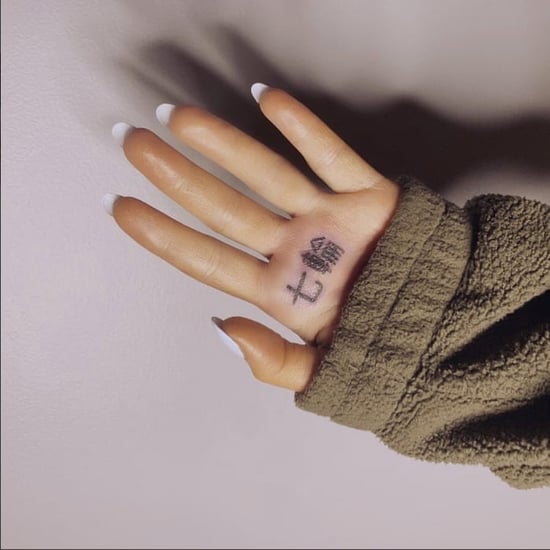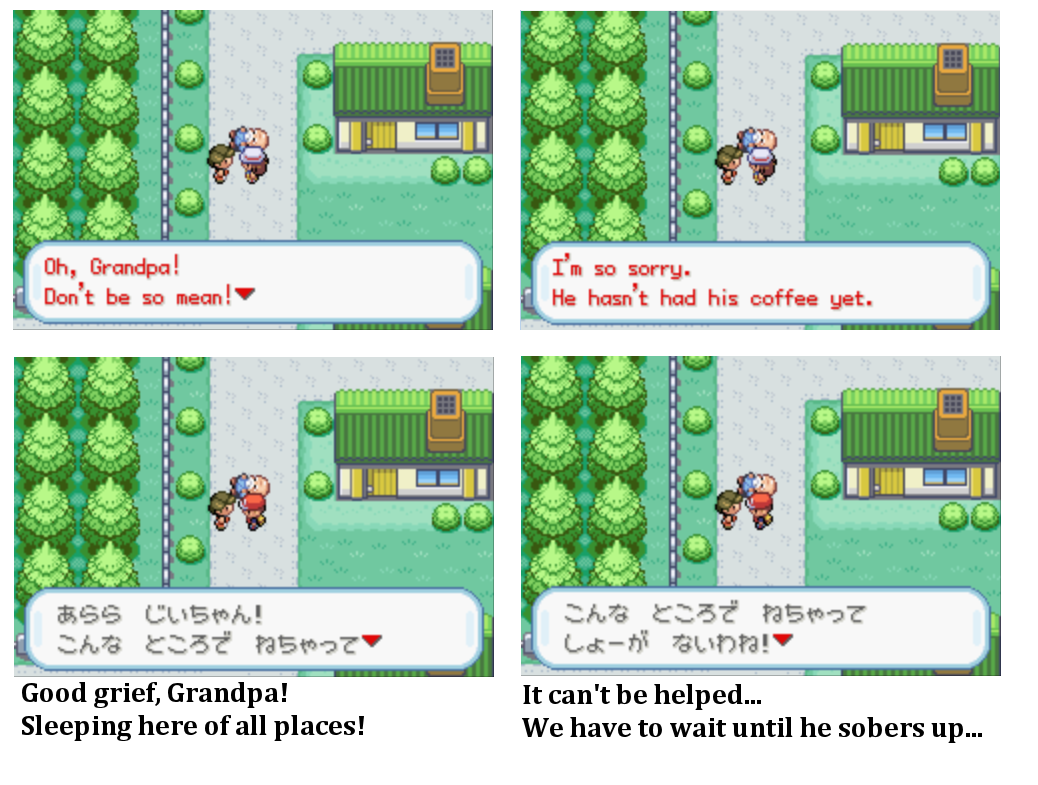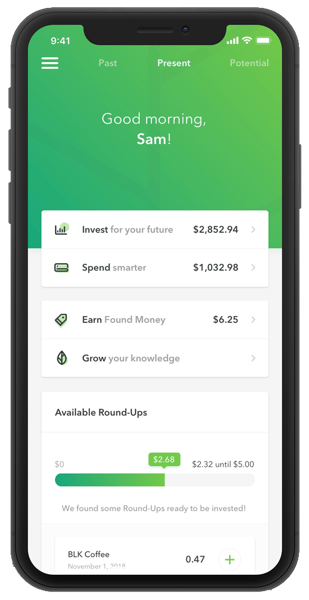
If you’re anything like me, you probably have quite the travel bug, but due to the many responsibilities of life, I’m not able to jump on a plane whenever I want and getaway. So, I resort to daydreaming to transport myself to my desired destination.
Instead of physically traveling, let’s instead go back in time to the United States in the mid-2000s where hoop earrings, Ed Hardy jeans, and No Fear t-shirts were everywhere. Where Gwen Stefani was trendsetting for an entire generation with her Harajuku-inspired fashion statements and where we’ll have no shortage in finding a wide array of Kanji (Japanese writing using Chinese characters) tattoos with incorrect meanings and usage.

Ariana Grande’s “7 rings” kanji tattoo actually reads “little charcoal grill.”
Though VMG Studios neither condemns nor condones the fashion choices of No Fear and Ed Hardy, we can definitely help all those tattoo enthusiasts with their newest piece of artwork. (I also want to make it known, as someone who has been studying Japanese for a while now, I totally understand Ariana’s mistake, and from a quick search, it seems like she’s also learning the language. Honest mistake and huge props to her for recognizing and embracing it.)
Having a tattoo with an incorrect meaning isn’t ideal, and the same goes for your marketing materials. While your product video might not be as permanent as a tattoo, a big mistake like improper translation or localization may alienate part of your target audience and yield negative results.
VMG producers have more than a decade of experience working with localizing everything from commercials to banner ads to video games and everything in between. We also have localization partners with extremely skilled and talented translators and localization experts from around the world. Pair those partnerships with VMG’s experience and you can rest easy knowing your creative content is in good hands.
While you’re getting your tattoo that has now gone through translation and cultural review, we’ll walk you through exactly what the difference is between translation and localization, why it’s important, and how to use them in tandem to help reach new markets and show your tattoo to the entire world (is the metaphor working, yet?).
Localization vs. Translation: What’s the Difference?
Basically, translation is the process of translating words or text from one language to another while localization is the process of making something local in character.
But we’re not here for the basics.
We’re all burgeoning polyglots and need to get into the real nitty-gritty.
So, let’s roll up our sleeves and hit this explanation with some elbow grease and tackle translation first and foremost.
What is Translation?
Translation is taking something, let’s say a sign informing all employees to wash their hands after using the restroom, and putting it into another language. Cultural review and regionalisms aren’t at the forefront here since the message is simple.

My mom always told me to lead by example, so let’s explore a translation template with the English sentence, “The child played with the red ball.”
| Original Text | Target Language | Literal Translation |
| The child played with the red ball. | Der Kind spielte mit dem roten Ball. | The child played with the red ball. |
| The child played with the red ball. | L’enfant a joué avec le ballon rouge. | The child played with the ball red. |
| The child played with the red ball. | 子供は赤いぼるで遊んだ | The child with red ball played. |
If you’re a native English speaker who doesn’t speak any other languages, you might still be able to pick out a few words in German and French through the process of elimination.
French is structured so that the adjective comes after the noun, whereas in German, the adjective(s) comes before the noun. This is also true of English and that makes sense since both English and German descended from the same root language: Proto-Germanic.
Let’s do a quick assessment. A few years ago, Rihanna got this French tattoo below. Taking what we learned above, can you spot the error?

If you said, “Hey! Given what I just learned, that says, ‘Flower rebel’ not ‘Rebellious flower’” then you nailed our little assessment.
The rumor is (seeing how I don’t know Rihanna personally) she was intending to get a tattoo that read “Rebellious Flower” in French. Instead, she got a tattoo that reads “rebelle fleur” which translates to “Flower Rebel.”
Now, given that one of Rihanna’s largest demographic is English speakers in the U.S., many likely understand the message she was originally going for better than if it was properly organized in French. I’m not saying this is what Rihanna, or her tattoo artist Bang Bang (shout out to Bang Bang), had in mind when they organized it this way, but since it is a possibility, this begins to tip into the grey area between translation and localization.
In this case, it would be like localizing a French term into English while retaining the French text.
In a quick summary, that is translation. You’re not changing much other than the words themselves.
Let’s take a look at that table again, specifically the column labeled “Literal Translation. This is extremely helpful in the translation process for those of us who don’t speak the target language.
| Original Text | Target Language | Literal Translation |
| The child played with the red ball. | Der Kind spielte mit dem roten Ball. | The child played with the red ball. |
| The child played with the red ball. | L’enfant a joué avec le ballon rouge. | The child played with the ball red. |
| The child played with the red ball. | 子供は赤いボールで遊んだ | The child with red ball played. |
The literal translation gives you an idea of the syntax that makes up the sentence.
Now, we wouldn’t want to say, “The child plays with the ball red” in English, but thanks to the Target Language translation, we can infer that in the context of the French language. While this may seem strange in English, it would seem just as strange if we pulled a Rihanna and forced our translators to switch “rouge” with “le ballon” for the French market.
When looking at the Japanese example, not only is their language character-based, but the word order becomes very different than English even with this simple sentence example. This is where having someone you trust and can help you understand the ins and outs of the translation is extremely important.
In Rihanna’s tattoo situation, it would make sense (even if it wasn’t her intention) to swap the order for English speakers but doing the same thing if your target audience is native French speakers doesn’t make sense.
Already, we can see the art of translation appearing and, while different, how closely translation and localization run. It’s all marketing. You want to consider who your audience is and tailor your content to them. You don’t want them to feel like they’re getting a hand-me-down product. You want them to feel like this was made for them. Did I mention that linguistics is super fun!
READ: HOW TO MAKE INTERACTIVE MEDIA ACCESSIBLE (AND WHY IT'S IMPORTANT)
What is Localization?
Localization is taking existing material and “localizing” it to whatever territory you’re marketing.
The trick to this is that you’re no longer just doing a translation but you’re adding a cultural review into the mix as well.
About five years ago, I was working at an audio post-production studio and was producing the localization of the newest (at that time) Tomb Raider game into the Russian market. This involved not only translating all of the game’s text (item names, descriptions, tutorials, menus, etc.) but also reworking some of the dialogue.
We’ll use video games as another example later in this article, but this is where the art form of translation/localization comes into play. You need translation to localize, but you don’t always need localization for translation.
Let’s use this article itself as an example. You may have noticed that I tend to use a lot of idioms and analogies to convey my points (that and wholly too many words). We’re going to translate this article into 7 languages: the EU5 which includes UK English, French, Spanish, German, and Italian, and we’ll throw in Chinese (Mandarin Modern Simplified) and Japanese just for good measure.
This is possible but, as you’ll see, we’re quickly going to run into issues. Let’s cover the idioms first.
In the third paragraph, I said, “So let’s roll up our sleeves and hit this explanation with some elbow grease.”
This sentence for a native English speaker makes sense. Even if you’re from the UK you’ll, for the most part, understand the message I’m trying to convey; Let’s put some hard work into this and focus on the task.
The issue shows itself as soon as we head into the non-English languages, and it’s a little devious. We can literally translate each of those words into other languages without too much trouble, but the problem here is that retention will go right out the window (there I go again with the idioms).
So, if we were to make this article available in non-English speaking markets, I would highly suggest full localization as opposed to direct translation.
A localized product would be where you have changed references, dubbed (re-recording VO in your target language), changed on-screen visuals to match the region you’re in, adjusted currencies both in symbol and amounts, and made it so that a native speaker to that region will feel like this product is made for them.
I promised some video game examples earlier so let’s pay that off.
Pokémon is a cultural phenomenon that’s still going strong to this day. When Nintendo originally thought to localize their IP, they thought there was a 10% chance it would catch on in the United States. The undertaking was huge so there was much more to consider than just translating the games. Everything from the character designs to the dialogue between characters needed to be considered. While the suggestion to change the Pokémon designs for American users was shot down, adjusting the names and dialogue was not.
There are numerous examples but let’s look at one that would impact not only the rating of the game in the U.S., but also would impact how well the game would sell in the market.
In Japan, the depiction of alcohol isn’t as much of a taboo as it is here in the U.S. This is a game that was almost solely marketed to younger audiences. So, early on in the game, you get to a spot where an old man is sleeping, and you cannot pass by without talking to him and his granddaughter.
Check out the graphic below where we see how in the original Japanese game, he is suffering from a hangover whereas in the English version the dialogue was changed to show that he just hadn’t had his morning coffee yet. He really needs that caffeine co-pilot to let the player through.

Graphics by: Kantopedia
This is the “cultural review” aspect we touched upon earlier. It’s not enough a lot of the time to just translate the text. You have to think about the cultural climate of the areas you’re working in.
This is also extremely prevalent in localized versions of anime as well.
Check out the screenshot below from Dragon Ball with the original Japanese edit on the right and the U.S. version on the left.

Credit: FUNimation, Toei Animation, Fuji TV and Akira Toriyama
That’s some frothy water! The character has gone from drinking a tall pint of beer to a refreshing glass of water. This is a form of censorship that can stem from the cultural review as you consider what demographics you are going to market to.
How Localization and Translation Works in Marketing
So, how does this apply to marketing? We’re not all making video games here.
Well, it’s quite simple. If you decide to only translate a marketing video, you risk alienating certain audiences or risk them focusing solely on the subtitles instead of the visuals you worked so hard on.
Here at VMG Studios, we’ve worked on all kinds of projects including training modules and tutorials, which are popular forms of marketing videos.
So, let’s role-play that we have a new training module for a new piece of software. The client wants to market this to multiple regions across the world and has asked for options to accomplish this. The software we’re making the module for is a financial assistant (like Acorns, Digit, or Mint), so we’ll be dealing with currencies and stocks.
Regardless of the level of localization, we would begin with English masters. This basically means we’ll build the entire module with English visuals and an English voice-over (VO) to use as our baseline. After that English video is locked-in and approved, we would ripple changes down from those English Masters.
We could just throw subtitles on the English videos and call it a day. This is what I like to refer to as “partial localization.” While this works well for commercials, it might not be enough to make sure each of the client’s markets has the tools needed to be successful in this training module since our main goal is the viewer’s retention of information. Because of this, a full localization would be my professional suggestion.
So, now we are heading into full localization.
We need to do some creative problem-solving to make this process not only accurate but cost-effective (time and money). The content of this type of project would be pretty dense involving a lot of currency, numerical values, and specific language.
A visual will be helpful to go along with this, so let’s take the home screen from the Acorns app and use that as a reference.

There are a number of things going on in this screenshot, and if we’re teaching consumers how to interact with this software, we need the directions to be clear.
If we were to just add subtitles with no translated onscreen text, things quickly start to get confusing.
The dollar sign symbol – $ – is used in a few regions (Singapore, Australia, Canada) even with different currencies. Along with this, the exchange rate from USD to Euro, Pound, and Canadian Dollar are all pretty similar. So, you’d have a lot of the EU, the UK, and Canada (even the French-speaking regions) relatively covered without having to change anything on screen.
However, when we look at the Japanese market, those numbers now paint a very different picture because of how the Yen is structured compared to USD.
During the cultural review, we would have to make sure that not only the language (VO) and onscreen text making sense for the markets, but also the currency. Since we’re instructing the viewer to set up an account that will be putting money away for retirement or giving suggestions on stocks to buy, we need to make sure the amounts they’re being instructed to use make sense for their market.
These videos can work without full localization but taking the necessary steps to prioritize your target audience and take their best interests into consideration speaks volumes to truly supporting your user base.
Instead of focusing on reading subtitles or reading on-screen disclaimers, the audience can now open up their account, follow along with the video inside their specific campaign, and just focus on learning.
Not everyone has followed a tutorial tailored to another language, but I bet almost everyone has watched some type of media in a foreign language. While you can still absorb the information and/or story this way, you will inevitably miss some details by going back and forth from reading subtitles to watching the action on screen.
Full localization is a way to mitigate this when discussing marketing materials.
Using Localization and Translation in Your Marketing Content
So now we’ve returned from the early 2000s and are back in the present. We’ve entered a world where more people are working remotely and relying on digital platforms more than ever before.
Being able to know the difference between localization and translation is important, though in my opinion, knowing when to leverage one over the other is the hat trick we’re looking for.
So, what have we learned? What’s the entire takeaway? Give me the TL;DR!
Translation is the act of taking text or a voice-over in one language and translating it into your target language. This includes syntax but usually doesn’t do too much in the cultural review department.
Localization is the act of making a product for your target language entirely. You take the cultural review into account, currencies, colloquialisms, references, and on and on. You’re making the audience feel like this product had them in mind.
Knowing when a translation will do the job and when localization is needed is a vital skill especially as more of the marketplace becomes accessible globally. Helping to make your audience feel included and being able to relate/understand your messaging is extremely important and VMG is here to help you do just that!
Click here to watch a video about the difference between closed captions and subtitles or download the cheat sheet below!






